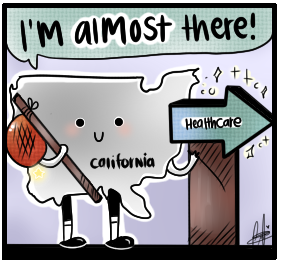2015: Vamping Education and Healthcare for a New California
KAYIU WONG
Opinions Editor
In our personal lives, it is no lie that we all aim to accomplish new goals and ambitions every time the new year rolls around. As far as 2015 goes, California is very close in creating effective change in two areas we have targeted for so long. The state already has reforms in place for public education and health care, but we are lacking the action to implement real, legislative change. California’s biggest resolution this year should be to build on these reforms once and for all and ultimately progress the state.
According to the Los Angeles Times, California has taken the largest steps in providing underprivileged students with more resources than any other state in the nation. Though we should commend ourselves for progressively closing the state’s education gap, the next change needed is to ensure the gap closes permanently. While Proposition 30 channeled $6 billion to under-funded schools in 2012 and Governor Jerry Brown’s current Local Control Funding Formula is increasing classroom funding to $8 billion for the next eight years, California’s school finance system is still categorized as inequitably distributed according to the California Department of Finance. As a solution, California needs a method to ensure flexibility when funding resources based on student demographics and accountability of funds on the local level. Only then will we fully achieve the state’s goals in helping destitute schools grow and manage the allocation of funds altogether.
In terms of health care, California has a chance to show the nation the importance of ensuring coverage to all civilians. According to New America Media, California Senator Ricardo Lara’s Health for All Act guarantees all Californians access to health care, regardless of their immigration status. Health care has always been a hot button topic for the nation, but the extreme situation of those without coverage is sometimes understated. California, for example, is comprised of millions of undocumented immigrants, meaning millions of state residents still remain without access to health care. Implementing the Health for All Act in the state will not only fuel a well-sustained population, but inspire other states to advocate for greater health care access as well.
2015 has the potential to be a significant turning point for California. In terms of expanding health care and education funds, it is time for the state to stop talking about the reforms we have made so far, and finally get down to the doing.
